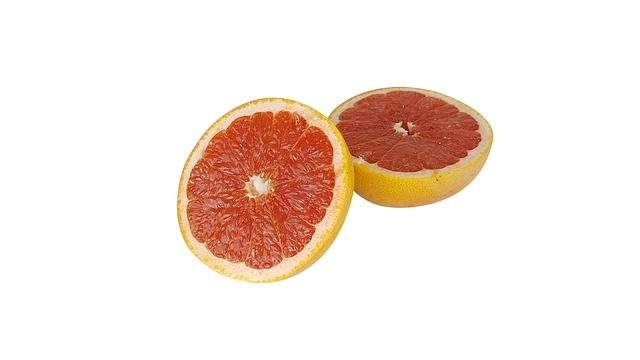lemon juice
Great Juicing Tips For Beginners And Experts

Juicing is a convenient and tasty way to get your recommended servings of fruits and veggies, without actually having to sit down and eat them all. The following article will give you advice to make juicing easy and healthy.
Try a masticating juicer. Masticating juicers extract juice less forcefully than regular juicers, enabling the juice to retain more nutrients. The juice that is rendered is also better at keeping when in storage.
When you make apple juice, use the ripest and sweetest apples that you can. If your apple is bruised, cut the bruise off. Some good apples for juicing that add some sweet flavor are Fuji, Gala, Rome, and Red Delicious.
Put color in the equation. Fruits and vegetables in brightly colored reds, greens and yellows translate to a variety of healthy vitamins and minerals. By mixing up the colors that you drink, you supply your body with a richer nutritional diet.
If your kids do not like vegetables much, then juicing is a great idea to help them have an easier time eating them. A lot of kids do not like vegetables. If you want to be really sneaky, mix fruits and vegetables in the same juice to hide that fact that the juice drink contains vegetables.
Lemon Juice
It is possible to make a big batch of juice to store in your refrigerator. Grayish juice isn’t very appetizing! To prevent the mix from turning brown, add a few teaspoons of lemon juice. The juice will stay bright longer. As long as you don’t add too much lemon juice, the taste will not be affected, and the juice will look fresh.
If your bladder is upset, or you’re suffering from a urinary infection, you should add cranberries into your juicing. Use them as soon as you feel problems coming on.
If you have diabetes or hypoglycemia, only juice vegetables until you talk to your doctor. Fruit juice can cause a rapid rise in your blood sugar level. It is important to monitor how much fruit you are juicing in your mixes to allow for your medical needs. Stick to vegetables that will give you plenty of nutrients without aggravating a medical issue.
Adding some juice to your diet can help give you more energy as you age. Juice provides many nutrients that can help to ease joint pain, aid memory or even slow down cell death due to free radicals.
You want to add in vegetables and fruits you don’t normally eat when you juice; you then want to cover up the flavors of these with other ingredients that can make it taste good. This is important because you might otherwise be missing out on very helpful nutrients. Adding apples or lemons to the juice will help to mask undesirable flavors.
Cucumbers can be juiced to provide nutrients especially good for hair growth and healthy skin. There is a lot of silica in cucumbers. Apart from strengthening hair and nails, silica is also able to strengthen the body’s connective tissue, and also bones and muscle.
Negative Calorie
Include a large amount of negative calorie fruits and vegetables in order to create a nutritious juice that doesn’t need to be burned off. Negative calorie foods include choices like herbs, cabbage and dark greens such as broccoli and kale. Fruits high in fiber are great since it takes a while for digestion to break them down.
One of the best ways to give your body the vitamins and nutrients it needs is by juicing. Nutrients in juicing can increase energy levels, encourage fitness, and provide protein. After your work out, juice fruits and vegetables high in calcium and potassium to replace lost electrolytes. If you are doing some heavy training, you can add some whey protein to help rebuild muscle.
Avoid constipation by including ingredients that promote regularity naturally: cabbage, grapes, papaya and others, for example. Drinking fresh juice on a regular basis will prevent chronic constipation.
Green juices are high in nutritional value and help you get fit, but there is a pervasive myth that they don’t taste very good. However, this isn’t the case. You can make the juice taste anyway you want with different ingredients. Limes can make the juice sour; apples can make it sweeter.
Before you eat your food, you should drink the juice you made. You get great health benefits from juicing and provide your body with a good tasting snack as well. The juice will cut your appetite so you eat less during the meal.
You will make a significant amount of pulp with the juicing process. The amount will vary depending on what produce you are juicing. You can use it for extra fiber the next time you juice.
When creating juices on your own, you should stay away from extremely sweet fruits. Although these fruits taste great, they are high in sugar and could raise your blood sugar to unhealthy levels. Add in some vegetables instead to create a healthier juice option. You could use fruits as an occasional treat, but they should be avoided for the most part.
You probably already knew that fresh juice is good for you. Put the advice of this article to work in your kitchen to start enjoying the delicious ways juicing can add healthy and creative fun to your diet.
How To Make Juice: Tips For Everyone

One of the most simple things to prepare is a glass of fresh juice, and every person can get into this quite quickly. The following article will give your crucial advice.
Use a single gear juicer that “chews” fruits and vegetables to extract the juice. Masticating juicers extract juice less forcefully than regular juicers, enabling the juice to retain more nutrients. The juice generated using this process is more durable for storage.
A well rounded juice blend can be a nutritious meal. Once you have made a few juices and know how much foods you have to have for just a single glass of juice, that idea will seem more logical to you. Consume the juice separate from your meals, because the nutrients will enter your bloodstream faster that way.
Use color to show you the way. Reds, oranges, yellows and greens: they all add different nutrients to the final product. Incorporating a number of differently colored fruits and vegetables into your juices gives both a deeper flavor and a wider range of nutrients.
Find out about the nutritional values of various vegetables and fruit before you begin making your own juice. Due to the huge variety of market produce available, many differences can exist in the types of nutrients offered. Use produce which covers different nutritional requirements, such as vitamin C or niacin. Blending different types of produce ensures that you’re receiving a wide range of vital vitamins and nutrients. As an added bonus, you get to play around with various flavor combinations.
While all fresh juices will sometimes contain pulp, you can decrease the amount of pulp in your fresh juice by using a coffee filter. This can prove helpful if the pulp consistency of your juice isn’t working for you. You can remove most of the pulp by pouring the juice through any straining device, such as a cheesecloth or coffee filter.
Lemon Juice
Making fresh juice to store in the refrigerator is a good idea, but you need to take steps to prevent the juice from changing colors. Darker juices are not very appealing, but you can prevent this from happening. One solution to the problem is to add a teaspoon or two of lemon juice tot he juice mixture. As long as you don’t add too much lemon juice, the taste will not be affected, and the juice will look fresh.
Don’t buy a juicer that is hard to get apart for cleaning. If you need twenty minutes or more to assemble your juicer, make your juice and then clean up, you will quickly tire of the process. Cleaning your juicer right after making juice is a lot easier than waiting until much of the liquid has evaporated and left hard pulp around your juicer.
Use cranberries as part of your juicing routine if you are suffering from a bladder condition or urinary tract infection. When you experience problems, use them immediately.
Ginger is known to help with any stomach upsets. Adding it your juice drinks can add some zest, as it aids in healing. Treat your whole digestive process to this anti-inflammatory that can reduce acid reflux and also help heal ulcers.
There are phytochemicals found in fruit and vegetable juice that are known to actually remove carcinogens from your body! Find out which fruits contain these phytochemicals and incorporate them into your juice mixes!
If you are getting older and starting to feel achy or tired, you can get a bit of that youthful vigor back with some juice! The nutrients found in fresh juice aid your body in staying healthy. They can work to boost your immune system, improve your memory and protect your body from free radicals.
Drink your juice as soon as you make it! In order to reap the optimum benefits from juicing, drink immediately after making. Vital nutrients diminish shortly after juicing. Therefore, to ensure that you receive the most nutrients, drink it immediately after making it.
Try to include as many negative calorie foods in your juicing as possible to get the most nutritious juice with the least need for burning off the fat it creates. This would include dark greens, such as broccoli, cabbage, kale and herbs. You can also use fruits rich in fiber since they require a lot of energy to digest.
A great juicing tip is to not wait too long to serve your juice. It has a much better taste the quicker it is served after making it.
It is important to remember that each fruit is different when you are juicing. You might need a dedicated machine to get the juices out of citrus fruits, whose members include mandarins, oranges and tangerines. Additionally, use caution when juicing melons as their juice often does not blend well with other fruits and can produce an unpleasant mixture.
There is nothing more delicious than freshly made juice and it is a fabulous way to add nutrition to any diet. Our bodies crave natural substances like the juices from fruits and veggies, so juicing might just be able to revitalize you and leave you feeling healthier than ever before.